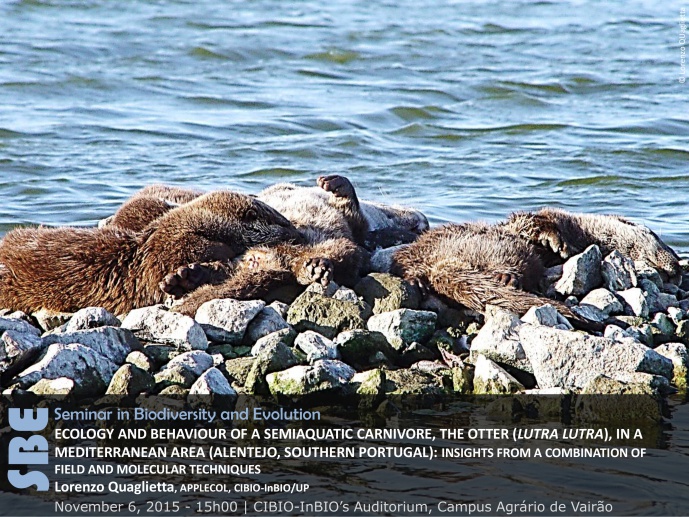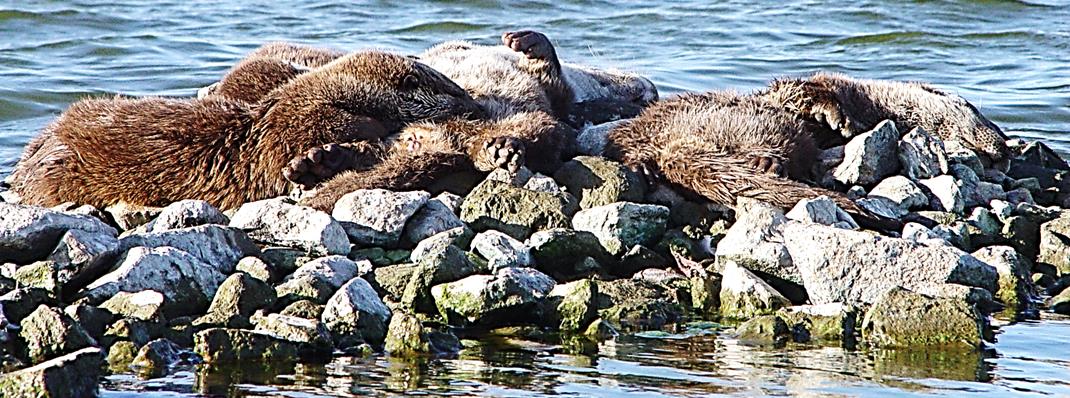ECOLOGY AND BEHAVIOUR OF A SEMIAQUATIC CARNIVORE, THE OTTER (LUTRA LUTRA), IN A MEDITERRANEAN AREA (ALENTEJO, SOUTHERN PORTUGAL): INSIGHTS FROM A COMBINATION OF FIELD AND MOLECULAR TECHNIQUES


Freshwaters are often considered the most threatened and less studied ecosystems worldwide. Habitat fragmentation and climate change strongly contribute to imperil such ecosystems, especially in Mediterranean areas, which are characterized by highly variable environmental conditions and frequent water fragmentation during the dry season. Eurasian otters (Lutra lutra) are elusive, semi-aquatic carnivores at the top of the freshwater food web. Considering the natural low densities and oscillations in populations’ numbers of this species, as well as a drastic diminution of suitable otter habitat due to climate change recently forecasted for South-West Europe, Mediterranean otters stand as a relevant model species to investigate the flexibility of freshwater top predators in the wet and dry seasons, providing crucial elements for the conservation of the whole freshwater ecosystem. In spite of being a widely distributed and studied species, knowledge of many aspects of otter behavioural ecology is still scant, especially in Mediterranean areas. This is yet another case of a species where the paucity of robust, biological baseline data - often obtainable only recurring to techniques considered very invasive by many such as telemetry - severely limit the correct conservation and management of animal populations, as well as the building of sound, population-level predictive ecological models.
I performed my PhD project in the Mediterranean freshwater habitats of Southern Portugal, characterized by temporary and permanent streams, ponds and small-medium reservoirs. I focused my project on the influence of the variability in the availability of resources (water and prey) on otter ecology, using a mixed approach consisting of field (radio-tracking, prey and water sampling, carcass collection) and molecular (genotyping of hairs, tissues, and fresh scats, using 19 microsatellite loci and a species-specific sex-marker) techniques. In 3.5 years of field work, the project led to the capture of 47 otters, of which 16 were marked and radio-tracked for longer average time periods than previous studies, and to the identification of 51 individual otters out of 65 samples genotyped. This allowed me to ascertain a protocol of trapping, handling, surgical implant and radio-monitoring of the species, gather several unprecedented data on a variety of aspects of Mediterranean otter ecology and behaviour based on a reasonably robust dataset, thus allowing inference at the population level. In this seminar, I’ll present part of these data, namely otter home ranges, activity and movement patterns, habitat selection, social interactions, relatedness spatial structure, and dispersal, discuss them focusing on the vulnerability of Mediterranean otters to climate change (in contrast with the low conservation status of otters in Portugal and other European, Mediterranean countries), showcase a pioneer otter GPS-telemetry study, and point out special challenges in the analyses of spatial ecology data of animals, such as otters, living in (or mostly using) linear habitats, while introducing a new, open source software ad-hoc conceived for this type of analyses currently under development.
Lorenzo Quaglietta completed his PhD (2012) in Animal Biology from the University of Roma “La Sapienza”, Italy, under supervision of Prof Luigi Boitani. His PhD project’s field work was performed in Alentejo, Southern Portugal, in collaboration with Évora University. Following a short period in Italy and the Brazilian Amazon, he returned to Portugal in 2013 as a post-doc fellow from the EDP Chair in Biodiversity and a member of the Applied Ecology (APPLECOL) group in CIBIO-InBIO (PI: Pedro Beja).
In his PhD research, he combined field (VHF and GPS telemetry, resource sampling, sign surveys) and molecular techniques to uncover several aspects of the ecology and biology of the Eurasian otter (Lutra lutra). Currently, he’s developing a research line on population ecology of semiaquatic freshwater mammals - emphasis on Pyrenean desman, Galemys pyrenaicus, and Eurasian otter - in Northern Portugal. He is also working on the development of a new R package for the analysis of the spatial ecology of organisms living in (or mostly using) linear/dendritic environments (e.g., rivers).
[Group Leader: Pedro Beja, Applied Population and Community Ecology]
Image credits: Lorenzo Quaglietta